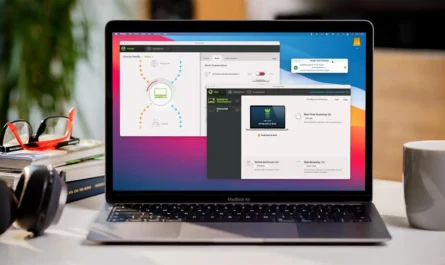If you’re feeling like your software testing process is taking too long and costing your team too much time, it’s time to switch up your strategies. This blog post will cover simple ways you can work smarter, not harder, when it comes to testing your software and maximizing efficiency. So let’s get started on taking control of the testing process!
Page Contents
Identifying Bottlenecks

When it comes to software testing, it is important to assess your process for areas where the testing process can be improved. Identifying bottlenecks is the key to identifying and eliminating obstacles that can slow it down.
Bottlenecks occur when the current workflow of activities in the process cannot keep up with demand. This means that some tasks are taking longer than normal or more resources are needed due to a lack of efficiency in the system. By identifying these bottlenecks, you can quickly take measures to address them before they become a bigger problem.
To help you identify potential bottlenecks, it’s important to look at each stage of your software testing process in detail and consider any issues that may have arisen during previous projects or have occurred during your current one. Examine all tasks associated with each stage: what is taking longer than expected? What has contributed to extended cycles and why? Is there any way processes can be simplified or optimized? Who is responsible for certain roles, and do they have adequate resources or skills to carry out their responsibilities?
Automating Testing

It is the process of using specialized software to execute tests without manual intervention. It can significantly boost efficiency, speed up the process and reduce errors. It can be used to test virtually any part of your application such as its user interface, performance, security, and reliability.
There are a number of different types of automated software testing that you can utilize depending on the type and size of your project. Some forms of automated testing include: unit tests which isolate individual components or procedures; integration tests which check how multiple components interact with each other; end-to-end tests which check all aspects of a system as a whole; and acceptance tests which ensure that customer requirements are fulfilled.
The biggest benefit to automating your software testing process is time saving — running automated tests for every code change eliminates manually performing the same checks repeatedly, resulting in faster releases and improved product quality. The burden of manually running tests is also removed from testers, allowing them to focus on finding more bugs instead of worrying about tedious tasks such as regression testing. Additionally, automated testing increases objectivity — results from automated tests can be reproduced across teams due to consistent conditions whenever the test is performed. If you are searching for software testing services, you should definitely visit this website.
Utilizing Cloud Computing

Cloud computing can help improve it, particularly if the application is designed to be cloud-native or has been built with a cloud infrastructure in mind. Cloud-based virtual machines can be quickly spun up and torn down instead of needing to install and troubleshoot on physical systems. Plus, the scalability of cloud computing means that larger workloads can be assigned to the same hardware, reducing time wasted during testing.
Cloud services also provide a wealth of server environments, from different operating systems to development tools and services like databases. This makes it easier for testers to try various configurations, which helps speed up the process by eliminating certain steps and makes it easier for developers to quickly deploy applications in multiple environments if needed.
Finally, cloud-based experimenting helps monitor and measure performance in real-time without needing any manual processes or external tools—giving developers crucial insight into how their application behaves along with access to detailed data about app usage that informs different areas of optimization and improves product quality.
Optimizing Test Data

Optimization of test data can reduce the time it takes to reach end results in it. Developing test data capture and analysis frameworks to decrease test data cycles is recommended in order to speed up the software testing process. A few techniques for optimizing your test data include:
- Defining clear limits when collecting test data: Defining a set of precise criteria that clearly define the parameters of your expected results when gathering specific pieces of test data will allow you to quickly focus on those pieces which will produce the most meaningful outcomes.
- Using domain-specific databases: Utilizing domain-specific databases for compiling and comparing test results allows teams to target more specific requirements, and should be taken into consideration when developing your framework.
- Automating any manual processes: Automation decreases the need for manual entry and reduces any human errors, while simultaneously increasing efficiency during tests. By implementing automated scripts, you can ensure your resources are used efficiently and relieve any unnecessary stress on personnel.
- Categorizing or tagging all existing or prospective records: Creating prearranged tags or categories allows users to easily sort through large amounts of retrieved information with ease, making it easier to detect a change in conditions based on collected data sets.
By taking steps to optimize your test data cycles during software testing, businesses can save resources by reducing time needed for tests while simultaneously increasing accuracy due to less reliance on Manual processes.
Implementing Parallel Testing

It is an important aspect when it comes to speeding up the software testing process. Through it, different types of tests can be executed at the same time across different systems which dramatically reduces the amount of time required to test an application.
By utilizing a combination of tools, processes and tasks, efficient parallel tests can be achieved. Each task should perform its own set of steps, simulations and sequential actions on a specific part or scenario whilst simultaneously other tasks are running on different parts or scenarios. This technique is especially useful for performance testing, integration and regression tests.
By implementing automated parallel testing processes with multiple environments (like dev, QA and prod) sharing common infrastructure can quickly accelerate test cycles as many tasks within these multiple environments can be tested simultaneously using a single test module.
Conclusion
In conclusion, there are several methods for speeding up your software testing process. Utilizing automation to eliminate repetitive manual tests, incorporating shorter test cycles, and utilizing virtualized test environments are some of the techniques you can use. Additionally, taking advantage of Agile testing processes and investing in quality analysis techniques such as user acceptance testing can offer an increase in software quality while reducing cycle time. If you choose to outsource your software development process, look for a provider that specializes in DevOps methodologies. These providers may be able to provide several services and advantages that could allow you to apply a more comprehensive approach to your testing process. Overall, it is important to prioritize the efficiency of your test cycles if you want faster and better results.





